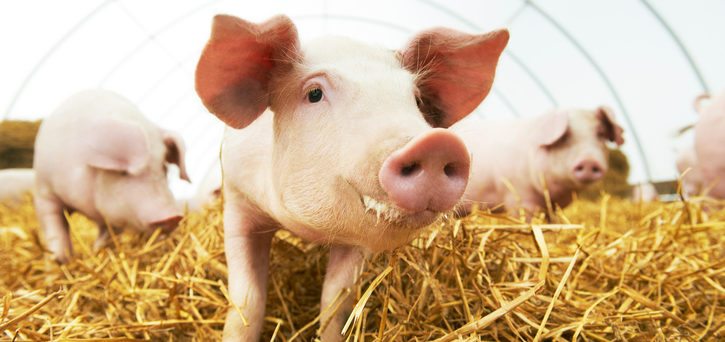
Diet is one of the most crucial factors when it comes to maintaining healthy swine. Many livestock producers are increasingly concerned about the dangers presented by molds in their feed stock. To that end, many companies are electing to apply mold inhibitors to their feed stores before giving it to their livestock.
What Do Mold Inhibitors Do?
Mold inhibitors are feed additives used to minimize mold contamination and prevent mold growth in grain and feed.
In livestock environments, mold inhibitors are the first line of defense against mycotoxins that can endanger the health of pigs. Mycotoxins such as aflatoxins, fumonosins, zearalenone, deoxynivalenol, and ochratoxin are created by molds that tend to grow on common livestock feed. Factors that tend to lead to the presence of mycotoxins in feed include:
- Moisture in feed storage
- Rapid change in environmental temperatures
- Storing feed in warm, damp conditions
Mycotoxins are particularly dangerous in livestock environments because the warm and humid conditions of livestock are particularly suitable for mold growth and toxin production. These toxins then lower pig’s resistance to diseases, in addition to causing liver and kidney damage, and potentially resulting in production and financial losses.
Medical issues caused by mycotoxins are known as mycotoxicoses.
The greatest threat from mycotoxins tends to come from long-term exposure; as noted by the National Institutes of Health (NIH), the “main human and veterinary health burden of mycotoxin exposure is related to chronic exposure (e.g., cancer induction, kidney toxicity, immunosuppression)”. However, acute conditions (i.e. illnesses occurring shortly after exposure to mycotoxins) are also possible.
Typical mold inhibitors typically include organic acids and their salts such as propionic acid, calcium propionate or sorbic acid. Inhibitors often come in both natural and synthetic forms, and their uses vary depend on the goals and needs of the environment in which they are used.
Mold inhibitors, such as Amonex, are synergistic blends of organic acids and their salts and are formulated in a way to provide immediate and long lasting protection against molds.
Why Mold Inhibitors Are Critical for Swine Health
As the old adage goes, “an ounce of prevention is worth a pound of cure”.
Mold inhibitors function as a critical first step towards reducing the level of disease and ill health amongst swine herds. The NIH states that “methods for controlling mycotoxins are largely preventive”; thus, the precaution of using mold inhibitors ultimately translates into significant savings in terms of productivity and money.
It should be noted that mycotoxins produced by molds cannot be removed from feed once they have developed, which makes prevention all the more important for large-scale livestock producers.
Mold inhibitors are essential for ensuring the viability and safety of both the herd and the herd’s food supply. They ensure that feed is both safe and desirable for pigs. The presence of mold in a food supply often makes pigs avoid eating, jeopardizing their future viability as a livestock product. Thus, reducing the level of mycotoxins in livestock feed is critical in both a palliative and nutritional sense.
Contact Bentoli With Questions
If you have questions about using mold inhibitors in your livestock feed supply, give us a call at +1 512-285-5300.
Since 1971, Bentoli has helped countless agricultural producers with their preservatives, processing aids, and nutritional additive needs. Simply put, we believe that better feed results in better food. From preservation to nutrition, our line of feed products helps you take the very best care of your livestock. Contact us today to speak with a team member about finding a feed solution that works for your company.


Efficacy mould inhibitor how much acid is coated lesser the free acid more efficient it is & lesser it chance to react with other premix like if it react with sod bicarbonate it completely neutralize (1molof sod. Bicarbonate equal to 13 mol of organic acid ) also free acid react with premix vitamin which oxidise & reduce it efficacy, free acid react with your feed mill machinery which cause rust or damage mixture in feed mill, In Amonex you find compare to other commercial mould inhibitor in market less free acid (0.005%) & more efficient 65% mould inhibitions efficacy in amonex.